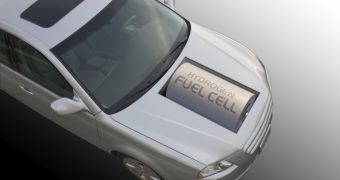With major automakers such as Toyota, Daimler, GM, Honda, and Hyundai expected to amp up development and commercialization of fuel cell passenger cars starting from 2015, sales of such vehicles are expected to boom by the end of this decade.
According to a recent study from Pike Research, sales of FCVs will surpass 1 million by the end of this decade, generating $16.9 billion (about €12.6 billion) in annual revenue by 2020.
Early sales will be focused on areas where infrastructure investments have been or are being made, such as the United States (primarily California and the New York City region), Germany, Scandinavia, Japan (mainly Tokyo, Nagoya, Osaka, and Fukuoka), South Korea (primarily around Seoul), and Shanghai, China.
The largest market for FCVs will be the Asia Pacific region, which will account for more than half of total worldwide sales in 2020. The most rapid growth, however, will come in Western Europe, where sales will increase at a compound annual growth rate (CAGR) of almost 53%.
Fuel cell vehicles are expected to generate high consumer interest mostly due to the fact that they offer the benefits of zero emissions operation without the range and charging limitations of pure battery electric vehicles (BEVs).
The primary barriers for this market are cost and infrastructure deployment. Pike Research specialists forecast that early adoption is likely to be focused in Japan, Germany, and California, where there is significant infrastructure investment planned.
“The limiting factor for the FCV market will be the availability of hydrogen infrastructure,” explained senior analyst Lisa Jerram. “If current plans for station construction are delayed or abandoned, the rollout of FCVs will be similarly pushed back.”
The report also forecasts global pre-commercial deployments of LDVs and buses through 2014, global commercial sales of LDVs and buses from 2015 through 2020, and potential revenue from fuel cell LDVs from 2015 through 2020.

 14 DAY TRIAL //
14 DAY TRIAL //